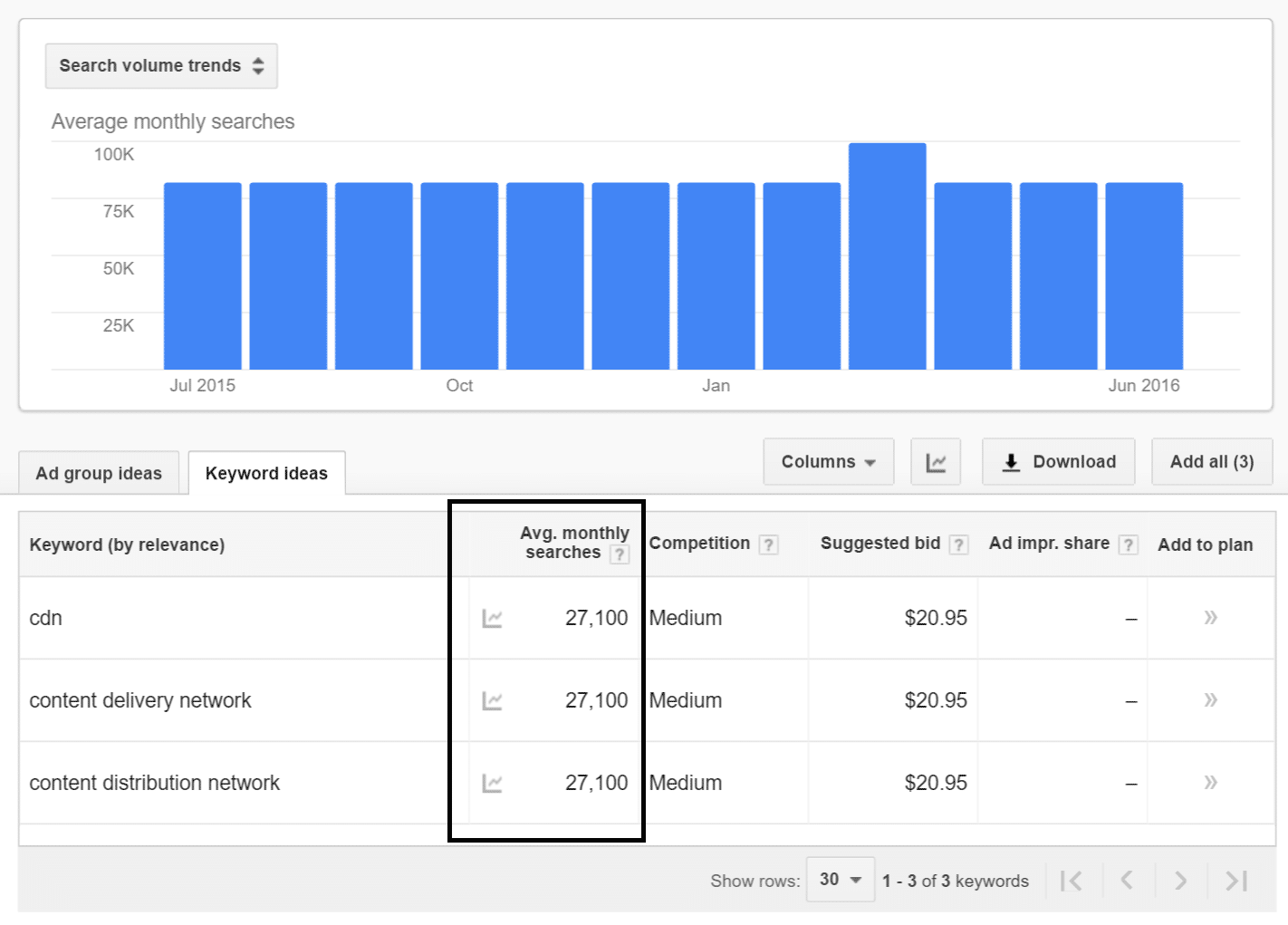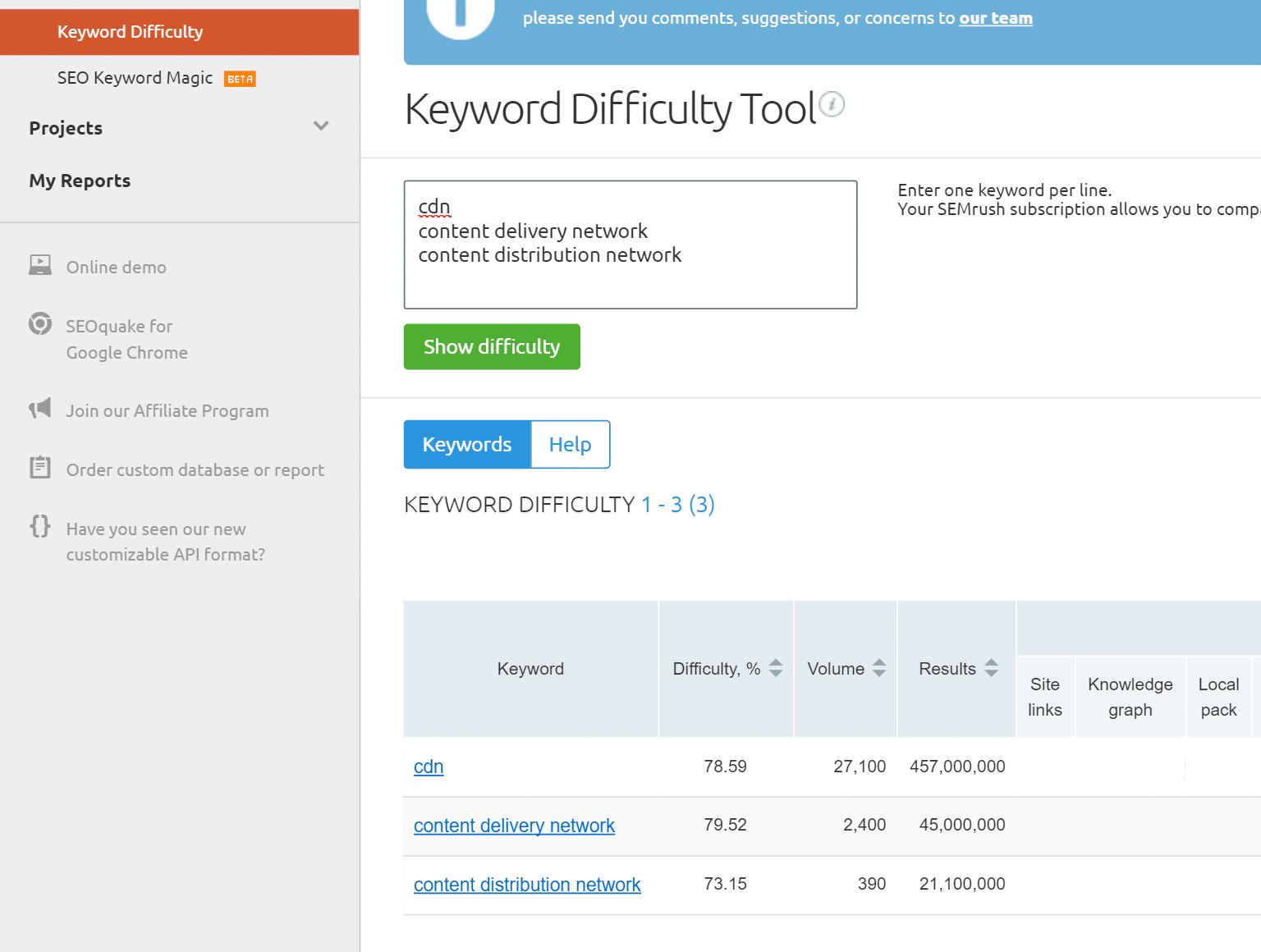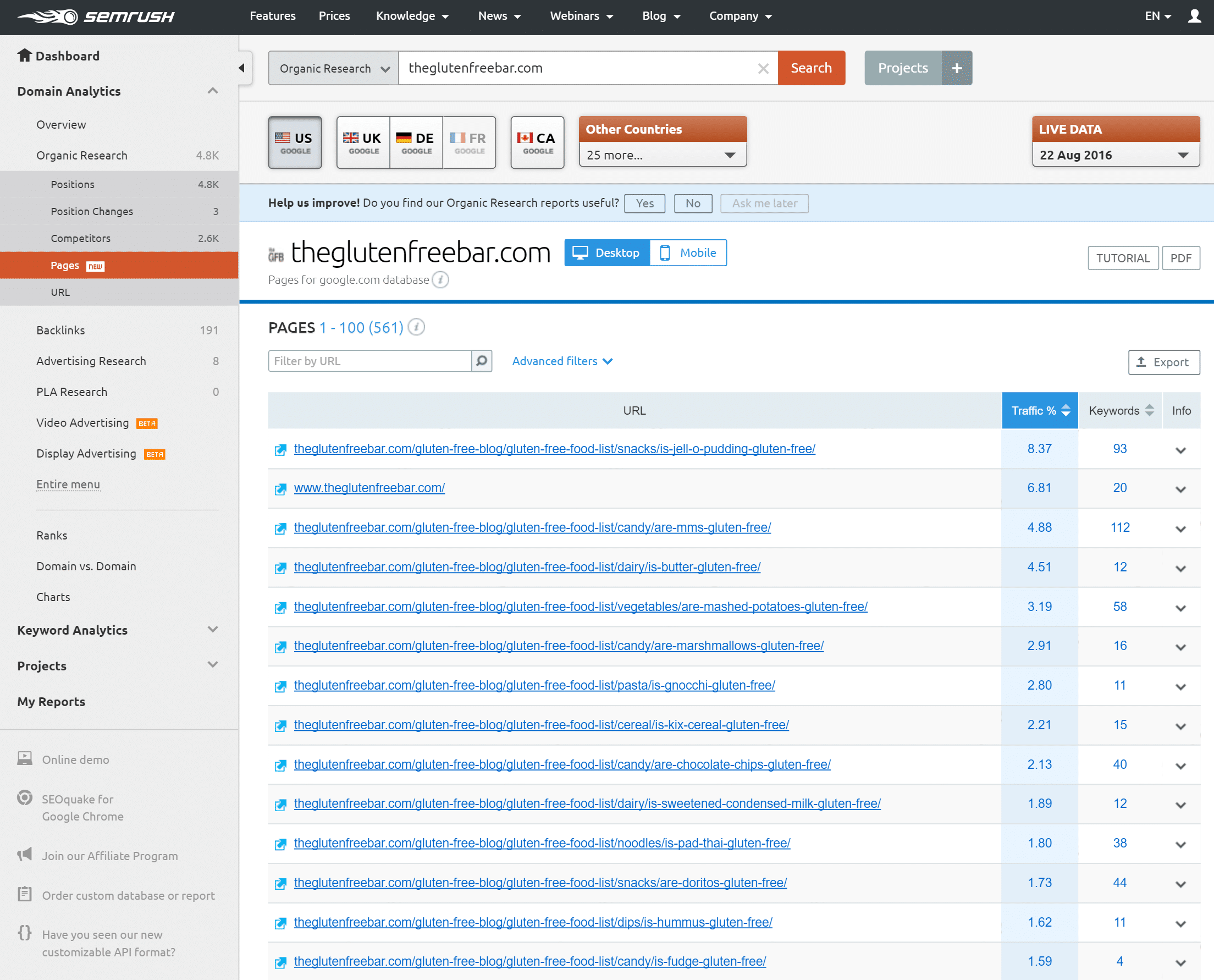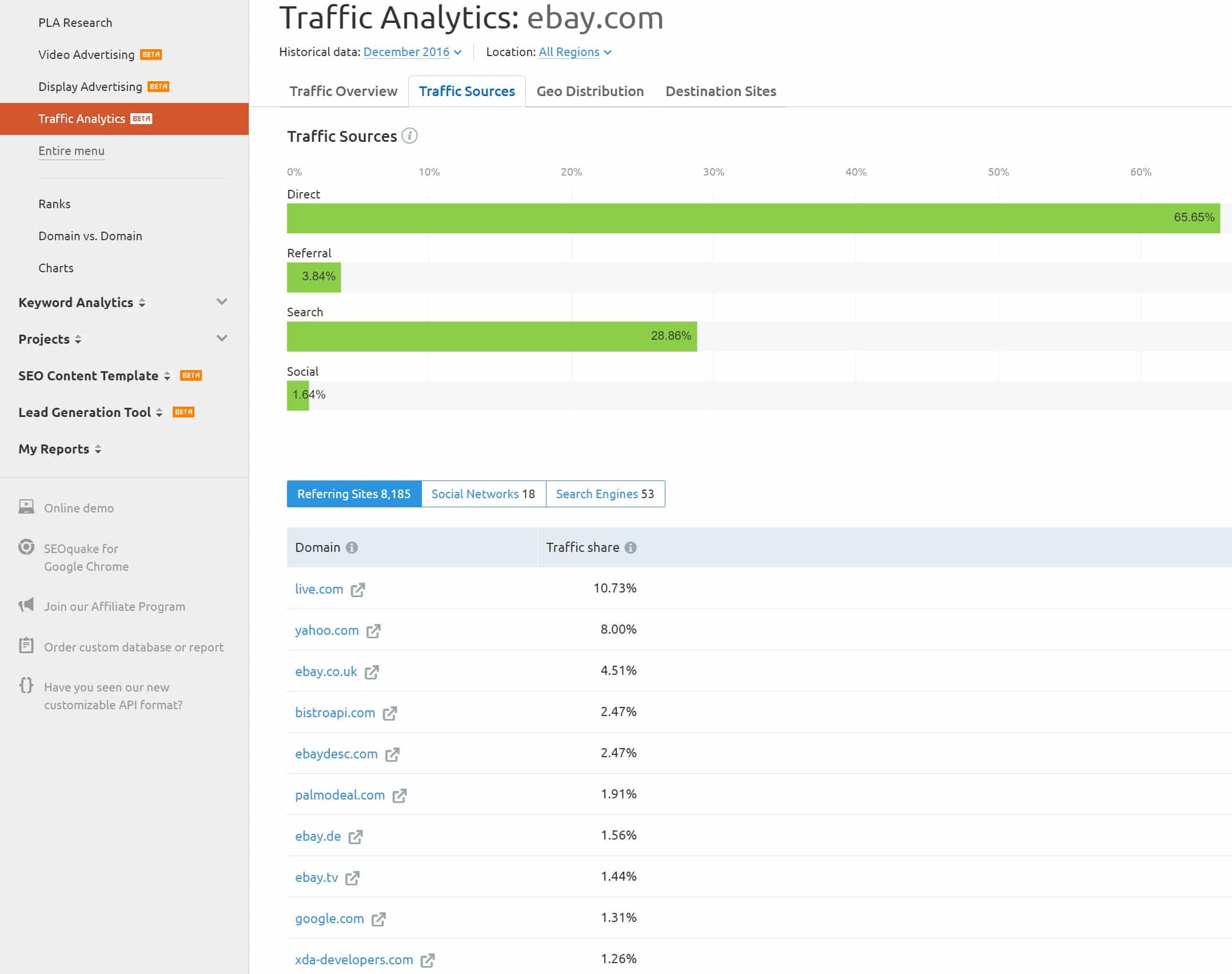Today I want to share with you my SEMrush review and how I am using it to increase my rankings in Google. If you are knee-deep in SEO every day like me then you know there is a huge problem right now that nobody seems to be talking about. And that is the keyword planner changes by Google to start using close variant keywords!

I am running into more and more of these keywords that are now grouped, so SEMrush pretty much came to my rescue. Below I will share with you a few tips and tricks on how I use SEMrush to better dominate SERPs.
SEMrush review
Below are some things that have been helping me become more productive and find the data I need faster. I will be honest. I have been a huge Ahrefs fan for a long time and still am. But these last two weeks I have been using SEMrush and found myself not needing Ahrefs at all. For a backlink tool yes, Ahrefs, is the best! But if you are doing any type of keyword research, competitor research, keyword volume lookup, I have found SEMrush to be much more reliable.
- SEMrush if fast
- Lookup current rankings of posts
- Grab keyword ideas
- Lookup exact keyword search volume data
- Steal competitor’s best content
- Find competitor’s traffic sources
1. SEMrush is fast
The very first thing I love and appreciate about SEMrush, especially compared to Ahrefs, is that it is always fast! This is my biggest complaint with Ahrefs. If I have to go to another tab and work while waiting for results, well… you pretty much lost my business. I am a pretty good multitasker but I shouldn’t have to switch tabs when doing keyword research. SEMrush is just plain fast.

2. Lookup current rankings of posts
When I go to optimize a post that maybe I haven’t ever optimized on a site before, the very first thing I do is look up the current keyword rankings. If something is working you don’t want to break it. As they say, if it ain’t broke don’t fix it. If something is already right at the top of page 2 with good search volume then I simply know I need to focus more on that.
In this example, let’s take the post I wrote about our “WordPress Coupon Plugin.” So I want to see what it is currently ranking for so I under the “Domain Analytics” and “Organic Research” section I paste in the URL of the post and hit “Search.”

It then spits out all the keywords that I am ranking for and their search volumes. As you can see some keywords are not really relevant because all I care about are people looking for a coupon plugin that maybe be interested in purchasing. I have highlighted the keywords that I now know that I should be focusing on.
While it isn’t a lot of search volume, you can also see that keyword difficulty scores (in the 50s) are low for SEMrush, meaning over time I should be able to easily dominate them.
Improve upon what is already working
So after seeing that information, what do I do next? I simply need to improve upon what is already ranking and working. Here are some general guidelines I use to optimize a current post.
- Update title to ensure it reflects the main keyword I want to focus on.
- Update the meta to ensure it includes the main keyword. While the meta doesn’t increase your SERP rankings, it does affect your CTR. And remember, Google highlights search terms in bold!
- Update a couple alt tags on images in the post with the keyword or secondary keyword.
- Add more content. This is usually almost always applicable. It is also a good way to ensure you have better keyword density. And yes, in 2016 keyword density should still be looked at. Don’t spam your keyword.
- If you have an ugly slug, redirect it (301) to a new shorter one, preferably the slug should match your main focus keyword.
- Make sure the post has a couple interlinks.
- Make sure the post has at least one link to an external site with high domain authority.
- Re-crawl with Google to ensure faster indexing/updates in SERPs.
- Re-share on social.
So as you can see, knowing the current rankings of your post is very important. Without using a tool like SEMrush I would have never known this information above. And I could have completely destroyed some of the current rankings and actually lost traffic. So when you go to optimize an old post, be smart about it!
3. Grab keyword ideas
Now let’s say I am writing a brand new post. Maybe about “blogging for money” So I have a few keywords in mind but I really don’t know what has the highest search volume or the variations I should be using. So this is where SEMrush’s new SEO Keyword Magic tool comes into play. This is still in beta but I am so glad they added this. I use it every day.
So in the SEO keyword magic tool, I input “blogging for money” and you can see it returns that keyword along with all the variations around it. It also gives the keyword search volume and keyword difficulty estimation. Now anything in the high 70s is going to be pretty hard to rank for without some work. Especially if you are publishing it on a newer website. This is where domain authority comes into play.
So on a brand new site, I would probably skip this topic or come at it from a different angle. But without using a tool like SEMrush you would have never known this.
Don’t waste time writing on a topic you might never rank for! It would be better to dig through to lower search volume results and aim for a keyword with lower keyword difficulty. Things add up over time, so writing for things with lower search volume is not necessarily always a bad thing if you push out a lot of content and are consistently ranking high in SERPs.
4. Lookup exact keyword search volume data
The other day I wrote about Google’s horrible decision to change their keyword planner data to use close variation keywords. This means a lot of keyword data is now grouped together, which makes it harder to do keyword research. This includes Keywordtool.io, LongTailPro, and pretty much any tool that uses the Google API.
The current solution though? Well, because SEMrush grabs their keyword search volume from a couple of different sources, including approximations from their own database, SEMrush doesn’t have this problem. Note: KWFinder also doesn’t have this problem. If you are looking for a cheaper keyword research tool, definitely a great one. I use both KWFinder and SEMrush for everything that I do.
Let me show you a comparison below. So first I look up the following keywords in Google keyword planner and here are the results. As you can see below they all match. Well, this is not helpful at all!
cdn: 27,000 searches
content delivery network: 27,000 searches
content distribution network: 27,000 searches

But, let’s plug those keywords into SEMrush. So I go to the “Keyword Difficulty” tool in SEMrush, another amazing tool, and plugin in just those keywords. And it returns the following results.
cdn: 27,100 searches
content delivery network: 2,400 searches
content distribution network: 390 searches
Now that is more like it!
Use SEMrush to bypass the Google keyword planner problem with close variant keywords!Click to Post5. Steal competitor’s best content
Another great tool I use in SEMrush is the newer “page” feature under Organic Research. This allows me to instantly see what a competitor’s best pages are and what is driving them the most traffic.
As some of you know, I run a gluten-free blog, and so this is an example of something I ran the other day. This website is a competitor of mine and I wanted to see which pages of theirs were ranking the highest and driving them the most traffic.
As you can see below, after entering their domain into the “pages” section it returns a list of the top pages with traffic % and the keywords that the URL is ranking for. You can then click on the “keywords” and it will give you the data as I showed you in #2 above, the keyword rankings for the post or page itself.
This is great for generating new blog post ideas as well as strategically writing to grab their traffic! You can even take this a step further and dig into the backlinks of that post or page and then try to reverse engineer the backlinks.
6. Find competitor’s traffic sources
And lastly, a brand new feature that SEMrush has just added, and that is the Traffic Analytics feature. This is actually pretty awesome! In the past you can use tools to find your competitor’s backlinks, keyword positions, top pages, etc. But there was no way to find where the competitor’s referral traffic was coming from.
Now there is! Of course, this is an approximation of aggregated data in SEMrush, but it is the best I have seen anywhere.
Summary
Those are just a few of the things I use SEMrush for. Other great features include the SEO audit tool, backlink research, and position tracker. To be honest, I could sit here all night and rave about all the amazing features that SEMrush has, but the ones above are the most important ones. I use them every day, all day.
SEMrush is one of those rare tools that never closes in my browser. I urge you to try some of the tips above as keyword research is alive and well in 2025!
Hopefully this SEMrush review was helpful. Have any experience yourself using SEMrush? Would love to know how you use it. Feel free to comment below.





Cool review, thank you! I tried SemRush several times before, but never felt in love with it. I’ll give it another try. By the way, talking with KWFinder support team a couple of days ago, they told me that they do not rely only on Google’s data, but on different sources. Is that true?
I was the same way Gabriele lol. I have seen bloggers raving about it for years and never gave in. Once I actually dove into it, I fell in love. It’s one of my favorite tools now.
I’m pretty sure that KWFinder is using Google API for search volume data. I know they use Moz and stuff for DA/PA etc.
Cool – thanks for your reply :)
I’ve been using SEMRush for a few months, but not to it’s full potential. Thanks for reminding me and pointing me to the great features it has.
Np Chris :) Ya was I really dove into SEMrush is when I really started to take advantage of all its features. I use it all day everyday now.
Ya it is expensive, can’t argue there. But the data is very accurate. I hadn’t heard of Serpstat before. Entered a keyword over at serpstat.com to test and it couldn’t find it, even though I know there are 300+ queries per month. So right there, they have already lost me as a customer.
Also serpstat has the same issue with close variant keywords: https://woorkup.com/close-variant-keywords/ With these two issues, paying more for SEMrush makes more sense.
Thanks for writing this review. I will give it a try.
I’m currently using Ahrefs for two things:
1) Keyword research
2) Backlink research (to get new backlinks my competitors rank for).
I know SEMRusj is great for keyword research, but what about backlinks?
I would happily switch considering SEMrush is much cheaper.
Here is my personal opinion as I use both tools extensively on daily basis.
SEMrush keyword data is way more accurate! In fact sometimes Ahrefs won’t even have the keyword at all, even though I know there is some search volume.
On the other hand, Ahrefs backlink database is much better. SEMrush backlink data sucks.
So that leaves as at a dilemma because nobody wants to pay for both tools. Also, did you get the free upgrade from Ahrefs a while back? They grandfathered me into the 2nd higher plan and if I leave I lose it forever. Lol, those sneaky guys.
No, I didn’t get the free upgrade unfortunately, which means I have to pay $179.00 per month to get access to the backlink checker + keyword research tool.
I’ll give SEMrush a try.
Hey Brain, thanks for write the greatest seo tools review. I use SEMRUSH for many reason that i can not explain here
Hey, Brian.
I am using SEMRush, this is really a powerful SEO tool. SEMRush has a lot of features. Keyword research, competitors analysis and site audit are best features. Thanks for sharing.
I use SEMrush primarily to make awesome content. The new “Topic Research” tool makes it a breeze to find exact-match questions to answer in content, and this feature also makes it super easy to find content ideas and H2 for those articles.
Love the tool for competitive research too, but the main use for me is for building great content. Great article, and appreciate your time!
Great strategy Chris! Love SEMrush :)